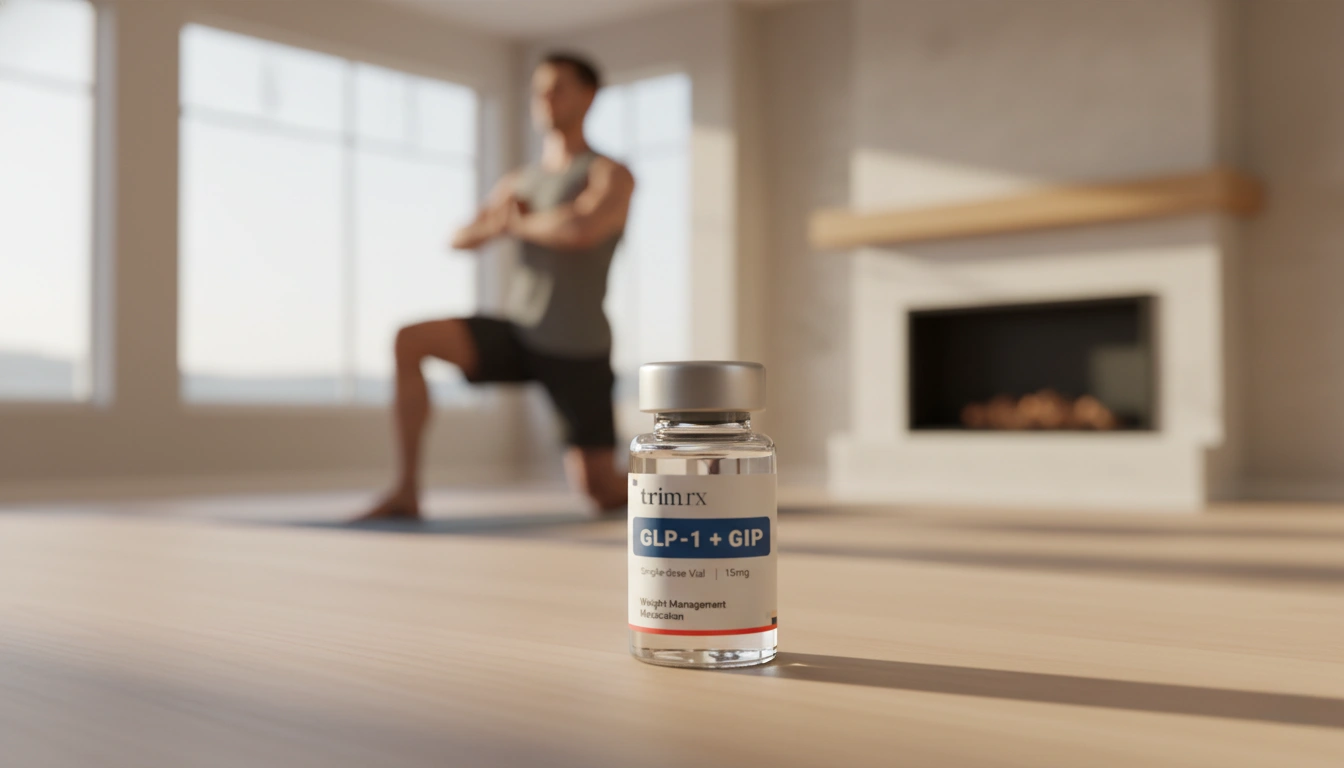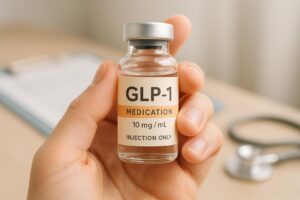The Best Place to Inject GLP-1: Maximizing Effectiveness and Comfort

Introduction
Did you know that nearly 40% of American adults are living with obesity, a condition that can lead to various health complications, including diabetes, heart disease, and certain cancers? As the prevalence of obesity continues to rise, so does the importance of effective weight management strategies. One of the most promising advancements in this field is the use of GLP-1 (glucagon-like peptide-1) receptor agonists, such as semaglutide, which have shown significant effectiveness in promoting weight loss and improving metabolic health.
For those prescribed GLP-1 medications, understanding the best places to inject these medications can enhance their effectiveness while ensuring a comfortable experience. In this blog post, we will explore the optimal injection sites for GLP-1 medications, the importance of site rotation, and best practices for safe and effective injections. By the end of this article, you’ll have a comprehensive overview of how to make the most of your GLP-1 treatment.
At TrimRx, our mission is to empower individuals in their weight loss journey through personalized, medically supervised care. We believe that sustainable weight loss is achievable through science, empathy, and a transparent approach. Our clinically proven weight loss solutions, including GLP-1 medications, are designed to support your unique journey towards a healthier lifestyle.
Let’s dive into the details of the best places to inject GLP-1 medications!
Understanding GLP-1 Medications
What Are GLP-1 Medications?
GLP-1 medications are a class of drugs that mimic the effects of the naturally occurring hormone GLP-1 in the body. This hormone plays a critical role in regulating insulin secretion, slowing gastric emptying, and reducing appetite. As a result, GLP-1 receptor agonists, such as semaglutide, have become popular options for both weight management and diabetes control.
Semaglutide has been approved by the FDA under the brand names Ozempic® and Wegovy® for weekly subcutaneous injections. These medications not only help lower blood sugar levels but also promote significant weight loss, with studies showing average reductions of around 15% of body weight over 68 weeks.
Why Injection Technique Matters
Proper injection technique is vital for ensuring the effectiveness of GLP-1 medications. Injecting into the correct area ensures that the medication is delivered to the subcutaneous fat layer, where it can be absorbed effectively. Incorrect administration can lead to discomfort, reduced efficacy, and complications such as irritation or infection at the injection site.
Optimal Injection Sites for GLP-1 Medications
Recommended Injection Areas
When injecting GLP-1 medications, the primary areas recommended include:
-
Abdomen: The abdomen is one of the most common and effective sites for GLP-1 injections. It is essential to choose an area at least two inches away from the belly button to avoid hitting any underlying structures. The abdominal region has a good layer of subcutaneous fat, which helps reduce discomfort and promotes effective absorption.
-
Thigh: The front and middle sections of the thigh, particularly several inches above the knees, are excellent choices for injections. Similar to the abdomen, the thigh provides sufficient fat padding to minimize discomfort.
-
Upper Arm: For individuals with less fat in the abdomen and thighs, the back of the upper arm can also serve as an injection site. However, it may not be as convenient for self-administered injections.
Importance of Site Rotation
To prevent complications such as lipohypertrophy (the buildup of fatty tissue at injection sites), it is crucial to rotate injection sites regularly. This means that if you inject in your abdomen one week, you should consider using your thigh the next week, and vice versa. When using the same area, ensure that you inject at least one inch apart from the previous injection site.
Regular rotation not only promotes healing of the skin but also improves absorption and reduces the risk of irritation. Keeping a log of injection sites can be helpful in managing this rotation effectively.
Techniques for Effective Injection
Once you have selected your injection site, it’s important to familiarize yourself with proper injection techniques to ensure safety and comfort. Here are some essential steps to follow:
-
Preparation: Wash your hands thoroughly and clean the injection site with an alcohol swab to minimize the risk of infection. Allow the area to dry completely before proceeding.
-
Drawing the Medication: If using a vial, draw the prescribed dose into the syringe carefully. If using a pre-filled pen, follow the manufacturer’s instructions for preparation.
-
Administering the Injection: Hold the syringe at a 90-degree angle to the skin, pinch a fold of skin to create a pocket, and inject the needle straight into the subcutaneous tissue. Inject the medication slowly and steadily, and hold the needle in place for a few seconds to ensure the full dose is delivered.
-
Post-Injection Care: After the injection, gently remove the needle and apply pressure with a cotton ball or gauze if there is any bleeding. Dispose of the needle in a proper sharps container immediately.
Factors Influencing Injection Site Effectiveness
While the injection sites mentioned above are generally effective, individual factors can influence how well the medication is absorbed. Some considerations include:
-
Body Composition: Individuals with different body compositions may find that certain sites are more comfortable or effective than others. For those with less subcutaneous fat, using the thigh or upper arm may be more suitable.
-
Injection Technique: Proper technique is critical for ensuring that the medication reaches the intended area. Incorrect angles or techniques can lead to discomfort and reduced absorption.
-
Consistency: Maintaining a consistent schedule and technique for injections can help maximize the medication’s effectiveness. Many individuals find it helpful to set reminders for their weekly injections.
Best Practices for Safe GLP-1 Injections
To further enhance the safety and effectiveness of your GLP-1 medication regimen, consider the following best practices:
-
Consult with Healthcare Professionals: Before starting any GLP-1 medication, engage with healthcare professionals who can provide personalized advice and support. At TrimRx, we offer comprehensive consultations to help you navigate your weight loss journey with confidence.
-
Stay Informed: Educate yourself about your medication, including potential side effects and management strategies. This knowledge empowers you to make informed decisions regarding your treatment.
-
Monitor Your Progress: Keep track of your weight loss journey and any side effects experienced during treatment. Regular check-ins with your healthcare provider can help adjust your plan as needed to optimize results.
-
Incorporate Healthy Lifestyle Changes: While GLP-1 medications can be highly effective, they work best when combined with a balanced diet and regular physical activity. Implementing sustainable lifestyle changes will contribute to long-term success.
-
Utilize Support Tools: Consider using journals, apps, or online platforms to track your injections, progress, and any challenges faced along the way. This reflection can highlight patterns and areas for improvement.
Conclusion
Choosing the best place to inject GLP-1 medications is crucial for maximizing their effectiveness and ensuring a comfortable experience. By understanding the recommended injection sites, practicing proper technique, and rotating injection locations, individuals can enhance their treatment outcomes while minimizing discomfort.
At TrimRx, we are dedicated to helping you achieve your weight loss goals through personalized, medically supervised care. Our comprehensive services, including doctor consultations, lab work, and ongoing support, ensure that your journey is both effective and sustainable. If you’re considering GLP-1 medications, we invite you to take our free assessment quiz to determine your eligibility and receive a personalized treatment plan tailored to your needs.
Together, let’s explore your options and embark on a transformative weight loss journey!
FAQ
How long does it take for GLP-1 medications to start working?
Most patients may begin to notice appetite suppression within one to two weeks, with maximum effects for weight loss seen around 12-16 weeks.
Can I inject GLP-1 medications at any time during the day?
GLP-1 medications are typically injected once weekly at any time of day, although many prefer to inject in the morning to prevent nausea.
Does injecting GLP-1 medications hurt?
Mild pain may occur during injections, lasting only a few seconds. Proper technique can minimize discomfort, and bruising or redness at the injection site is uncommon.
Why is it important to rotate injection sites?
Rotating injection sites helps prevent complications such as lipohypertrophy and ensures consistent absorption of the medication.
How can I learn more about GLP-1 medications and their effectiveness?
Consult with healthcare professionals who can provide detailed information tailored to your health needs. At TrimRx, we offer comprehensive support for individuals looking to manage their weight effectively.

Transforming Lives, One Step at a Time
Keep reading
Tracking Progress With GLP-1: What To Measure
Learn which metrics to track on GLP‑1 therapy—weight, waist, blood sugar, lipids, side effects, and non‑scale wins—and how often to monitor them.
Fatigue Solutions for Ozempic and Wegovy Users
Hydration, protein-rich meals, light activity, and better sleep can reduce medication-related fatigue and help maintain energy during weight-loss treatment.
GLP-1 Medication Side Effect Checker
Worried about GLP-1 medication side effects? Use our free checker for Semaglutide, Liraglutide, and more to learn what to expect and stay informed!



